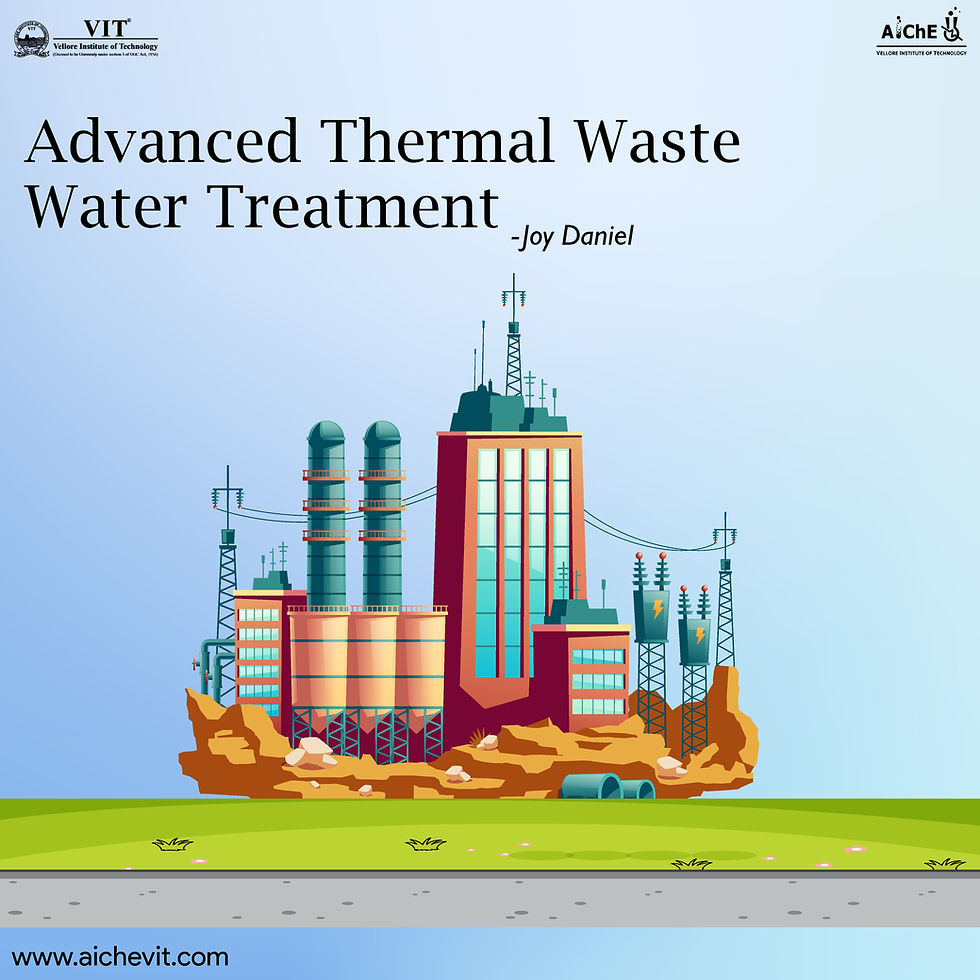The Role of Chemical Polymers in Excavating and Drilling
- AIChE-VIT

- Dec 20, 2021
- 3 min read

Many of us know just how significant the role of chemicals is in our day-to-day life on, above, as well as below the earth's surface. For starters, toothpaste contains Calcium carbonate and sodium fluoride, cleaners contain Esters for washing clothes, the salt we add to our food is sodium chloride, the list is neverending. In oil and gas production, drilling is a process of hydraulic fracturing that uses numerous chemicals that flow deep down oil wells. Quite a few problems arise when the process of drilling is employed. This article explores the issues that arise during drilling and ways to solve them, with the help of polymers.
The increasing oil and gas production causes substantial growth opportunities for chemical and polymeric industries. The chemicals used are made for processes such as hydraulic fracturing (also called fracking). The challenges begin between profitable and environmental counter-reaction on choosing chemicals and marketing for this industry. Oil field service companies and well operators involved in developing chemical recipes like guar gum and ethylene glycol are also searching for chemicals that will help economically produce further hydrocarbons from a single drilling site, reuse water from hydraulic fracturing, and reduce pitfalls to the environment.
Do you ever think about the reason for the ever-evolving processes involving chemical interaction deep within geologic formation? The reason is that the rise of oil production from unconventional sources like shale rock, deep ocean reserves, and previously trapped-out oil wells is driving a certain demand for further sophisticated chemistry, leading to increased research in the field. Several hundred chemicals are added to water in hydraulic fracturing to open shale rocks. This keeps oil and gas flowing from horizontal drilling wells. The quantum of fluid used in fracking can be 20 times than that of conventional wells. The plant-derived polymer guar and more toxic chemicals like benzene and xylene are used in large volumes. What makes polymers unique is the fact that they are biodegradable. It leaves little or no residue that biodegrades over time. This residue, if left untreated, is poisonous to submarine life if released into face water.
The chemicals include thickeners and friction reducers to help deliver the proppants (that keep the fracture open after the complete process) in horizontal wells using guar gum.
Guar gum is a chemically modified polysaccharide used in hair conditioners and agricultural chemicals. In some cases, large amounts of guar gum can cause damage to the structure of proppants. After the fracking process, the so-called produced water still contains salt and minerals from the rock formation. Understanding this is an essential part of analysing the overall risk.
Salinity, high temperature, and pressure play a significant role in making oil and gas wells more productive, even under harsh environmental conditions. The solution here is to control and withstand high-temperature cellulosic substances.
Methenamine is used as a corrosion inhibitor. Ethylene glycol is used as a crosslinker, friction reducer, and nonylphenol ethoxylate.
Microbes and bacterial organisms originate either from the fracking water or form rock formations, and they exponentially increase by serving biopolymers. The problem that arises here is the production of sulfate-reducing bacteria, which cause corrosion and toxic hydrogen sulfide. These bacteria lead to equipment failure and souring of wells.
Therefore, Microbial control processes are required in each stage of the oil and gas drilling process:
1. Pre-treatment of Fracking wastewater: In the fracking process, the water used can either be fresh or recycled water containing naturally occurring microorganisms that can multiply. So pre-treatment of this water is required.

DBNPA (2,2-dibromo-3-nitrilopropionamide).
2. Addition of Biocides: In the underground drilling process, the production of microbes is challenging to control. It emits the corrosive gas of hydrogen sulfide. Biocides can thus be added to fracturing chemicals to kill bacteria that can corrode well casings, limit the efficacy of oil and gas extraction, and produce highly toxic hydrogen sulfide gas.

Tetrakis hydroxymethyl-phosphonium sulfate (THPS)
3. The production of long-lasting biocides: After completing hydraulic fracturing, microbes can rebound, creating slime that prevents oil and gas from flowing freely from the fractures. Biocides can survive in high temperatures, and salinity helps prevent the well's souring.

Dazomet cetyltrimethylammonium chloride (CTAC)
These are a few of the many solutions that have been worked upon to reduce microbes' activities in the deep-well process of oil and gas production. As an eco-friendly bonus, biodegradable polymers also help in reducing environmental side effects generated due to biocides. The excavation and extraction of oil and gas may be a long and challenging process, but it doesn't have to be as harmful. In time, ideally, the damage caused by processes such as these could be minimised to a much greater extent. Experimenting with different materials such as biopolymers using modern technology has allowed us to see an environment-friendly alternative against the current methods.





Highly insightful article, Kiruthika!